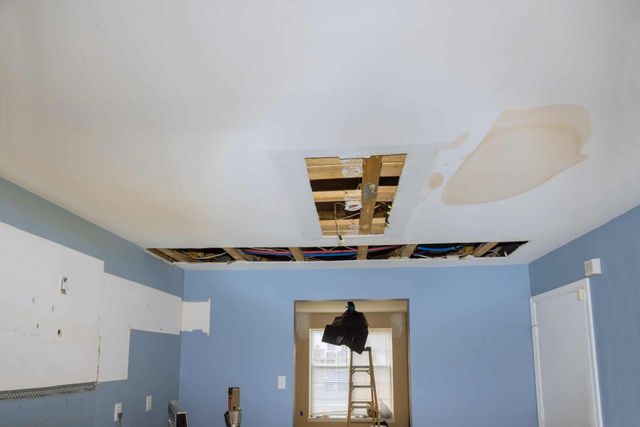What are your thoughts regarding How to Repair and Prevent Bathroom Water Damage??

Water damage usually happens in the restroom because of the water made use of daily. In some cases, the damage could be a little mold from the shower. Other times, it's massive damages on your floor. Whatever it is, it is always great to understand the cause and also stop it before it takes place.
This guide will go through several of the common reasons for water damage in the restroom. We will also analyze what you can do to prevent these causes from damaging your shower room. Allow's dive in.
These are the usual reasons you would have water damage in your shower rooms and exactly how you can detect them:
Excess Wetness
It's great to have that lengthy shower as well as splash water while you dance around and act like you're executing, however occasionally these acts might cause water damage to your washroom.
Splashing water around can trigger water to go to corners and also create molds. View exactly how you spread out excess wetness around, and when you do it, clean it up to stop damage.
Fractures in your wall tiles
Washroom wall ceramic tiles have been particularly developed for that function. They safeguard the wall from moisture from people taking showers. Nevertheless, they are not indestructible.
Sometimes, your bathroom wall surface ceramic tiles split and allow some dampness to leak right into the wall surface. This could potentially ruin the wall surface if you don't take any activity. If you see a crack on your wall tiles, repair it instantly. Don't wait till it ruins your wall.
Overruning toilets and sinks
As human beings, occasionally we make errors that might trigger some water damage in the restroom. As an example, leaving your sink tap on could create overruning and damages to other parts of the washroom with wetness.
Also, a defective commode might trigger overflowing. For instance, a busted commode deal with or various other parts of the cistern. When this occurs, it can harm the flooring.
As quickly as you discover an overflowing sink or commode, call a plumbing technician to aid handle it quickly.
Burst or Leaking Pipelines
There are several pipes carrying water to various parts of your bathroom. Some pipelines take water to the bathroom, the sink, the faucets, the shower, as well as numerous other locations. They crisscross the tiny location of the restroom.
Every now and then, these pipelines can obtain rustic and also ruptured. Various other times, human activity can create them to leakage. When this takes place, you'll find water in the edges of your restroom or on the wall surface.
To find this, watch out for bubbling walls, molds, or mold. Call an expert emergency plumbing technician to fix this when it takes place.
Roof Leaks
Sometimes, the problem of water damage to the bathroom may not originate from the washroom. For example, a roof covering leak can trigger damage to the bathroom ceiling. You can find the damage done by considering the water stains on the ceiling.
If you discover water spots on your ceiling, examine the roofing system to see if it's damaged. Then, call an expert to aid address the issue.
Verdict
Water damage to your bathroom can be aggravating. Nevertheless, you can manage it if you prevent several of the reasons pointed out in this guide. Call a specialist emergency plumbing if you notice any serious damages.
How to Prevent Water Damage in Your Bathroom?
Water damage repair is an expensive, meticulous, and lengthy process. Unfortunately, bathrooms are the most susceptible rooms to water damage due to toilets, showers, and sinks. Pipes and fixtures wear out over time and are not immune to damage. But all is not lost, as there are ways to prevent water damage from occurring in your bathroom.
Check Your Plumbing
Nothing lasts forever, especially pipes, which can rust and begin leaking over time. You should periodically conduct pipe inspections and pay attention for any musty smells or water stains that may indicate you need water damage repair. Here are some things to check:
Frequently test valves for your toilet, shower, and sink to ensure they are properly working. Check faucet supply lines hidden under vanities and replace when needed. Replace cracked or deteriorating caulking along sinks, tubs, and showers. If you notice a clog in your sink, call in a professional. Since you can’t check the pipes in the wall, keep an eye out for stains, drywall bubbling, musty smells, and excess moisture; if the bathroom is on a second level, check the ceiling of the room directly below for these signs. Don’t Overwork Your Toilet
One of the most common reasons bathrooms need water damage repair is due to overflowing toilets. Save yourself the hassle of cleanup by being mindful and not pushing your toilet to extreme limits. If you have young children, it is especially important to keep an eye on them when they are in the bathroom and to teach them how to avoid clogging the toilet. Here are some more tips to help prevent your toilet from overflowing:
If you have a septic tank, only use septic-safe toilet paper Do not flush anything down the toilet besides toilet paper; items like diapers and sanitary napkins will clog the piping Pay attention to your toilet’s water level: If it’s low, it could mean it is partially clogged or that there is a crack in the toilet bowl https://www.alure.com/home-improvements-blog/resources/how-to-prevent-water-damage-in-your-bathroom

As a reader about How to Repair and Prevent Bathroom Water Damage?, I imagined sharing that piece of content was really helpful. Do you know another person who is involved in the topic? Take a moment to share it. Many thanks for your time invested reading it.
Quick resolutions for plumbing disruptions.